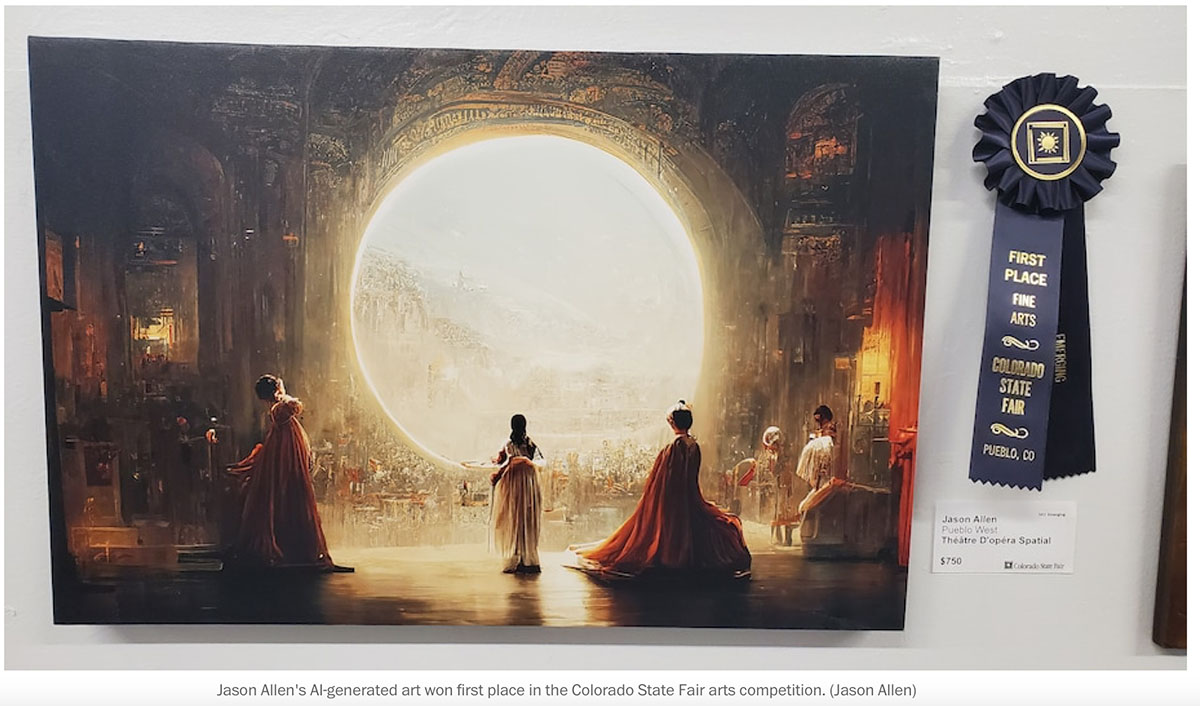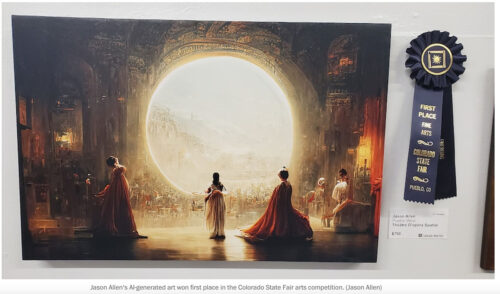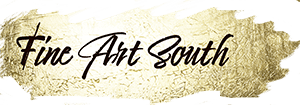Recently the online art news world was subjected to viewing the printed image below, and many people concluded it’s not art. I completely disagree! This computer-generated art won a first place ribbon at the Colorado State Fair. More traditional artists were pissed off. I don’t understand why. I have seen art made of all kinds of things that aren’t traditional and no one complained. What is wrong with AI-generated art?

In my opinion, art happens inside the brain. It often comes out differently than the artist intended, after the initial idea and the imagining of it. So the end result is not actually the art we imagine in our brains. Therefore how can the end result be more “pure art” than the idea itself, or than this outcome?
What I have found by reading about it is that the AI-generating art process is complicated and involves a lot more than random images. It’s also not plagiarism, any more than creating art by using online images here and there, is plagiarism. If anything, this example of art is probably closer to the artists’ intentions than many painters achieve, and the artist got there with a lot of work. You can read about it here. I also feel that the artist’s process was that of how art is commonly started – with a vision – so his end result, no matter how he got to it, is his art. Of course it’s art!
Art is more of an idea than a result. For instance, I think that art should involve a process that is something more creative than just copying. What I feel is really not real art are the photorealism paintings where people are replicating an image in a manner that is not interpretive, but acting like a human copy machine. It’s a technical exercise, even more than this AI-generated art is. I know that is a very minority opinion, but it just goes to show that we all have different ideas as to what art really is.
Some people don’t feel photography can be art because even more than AI generated art, it’s simply the capturing of whatever an artist points their camera at! If people feel that photography can be art, then I’d like them to explain how AI-generated art is not art.
Plagiarism doesn’t have the meaning it once had, and it’s not the serious offense it used to be, and as the internet and AI grow, the meanings of the idea of ownership will shift even more. Ownership of digital content is basically what NFTs are for.
As the entirety of human imagery and intelligence and history can now be found on our computers and devices and people are using more of it more often for their own purposes, as time goes on.
It’s not cheating any more than using any other types of “shortcuts” in creating art are cheating, and there are hundreds of these shortcuts that most artists know about. Formulas, shortcuts, tracing, apps, etc. None of it’s cheating because art happens in the brain. And art is defined by the artist, not the people who look at it.
As the last part of the article linked above explains, previous “cheating” methods in making art are now widely accepted by most artists (if not me). It’s fine if people haven’t figured this out yet, but I do feel like AI-generated art is here to stay, so we better all get used to it. And if you don’t want to fight ’em, join ’em.
Gregory Block, an oil painter in Denver who was not a part of the competition, said he finds it hard to imagine an AI generator supplanting the hundreds of hours — and all the “heart, soul, blood, sweat and tears” — he’s invested into his art. But he also thinks back to the artists that first inspired him, who used rudimentary devices like the camera lucida, in the 1800s, to aid their own designs.
“That was thought of as cheating, too,” he said. “Yet they used it to make these incredible paintings: anatomically correct figures, beautiful soft lighting. … Those steps in technology are elemental to our art. Otherwise, we’d still be doing cave paintings with just our hands and blood.”
The AI, he said, can imbue the art with a mysterious beauty, made all the more special because it is so hard to understand. But “the soul any of us can find in a piece of artwork, the emotion, the human struggle we identify with in art is always our own.”
“It doesn’t have to necessarily be created out of a human soul, the artwork itself. It is for us to see and react to,” Block said. “We the viewers are, in the end, the ultimate artists. We’re the ones creating the world that is coming in through our eyeballs. That world is in our mind.”






